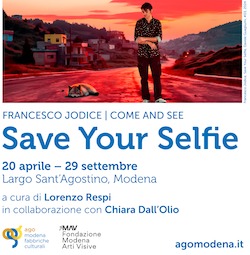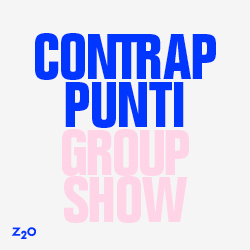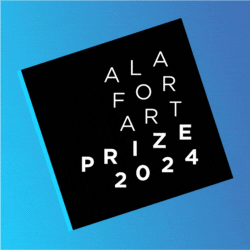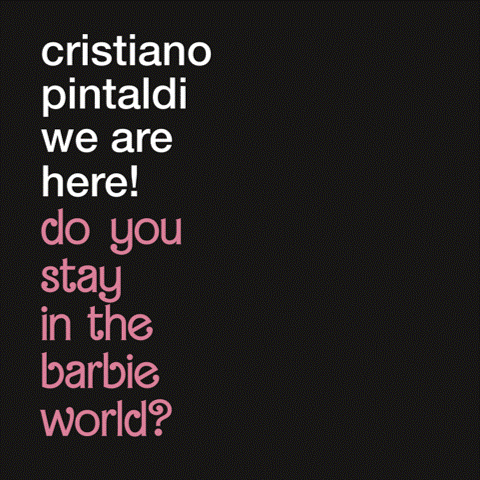
(English version below)
Andrew Bonacina (Chief Curator, The Hepworth Wakefield), ha selezionato 19 gallerie che presenteranno nei loro stand sia mostre personali che collettive curate appositamente per la fiera.
Per ulteriori informazioni ? miart 2015
Abbiamo fatto alcune domande ad Andrew Bonacina.
ATP: Puoi introdurci a questa edizione 2015 della sezione Emergent?
Andrew Bonacina: La sezione Emergent di Miart raccoglie un’emozionante selezione di giovani gallerie internazionali. In attività da cinque anni o meno, le gallerie lavorano per la maggior parte con artisti emergenti o a metà carriera, e molte hanno iniziato come spazi gestiti da artisti o come project-spaces. Miart è una fiera piccola e molto ben focalizzata, e in modo ambizioso presenta fianco a fianco artisti storici e contemporanei, e la sezione Emergent offre una piattaforma per le gallerie con cui presentare artisti all’inizio delle loro carriera. Ci sono nomi che i visitatori riconosceranno e altri che saranno completamente nuovi, quindi sarà una miscela molto interessante.
ATP: In che modo hai scelto le gallerie? Quali saranno le principali novità rispetto all’edizione dell’anno scorso?
AB: Prima di guardare la proposta di una galleria per uno stand in fiera ne esploro il programma e cerco di avere un’idea della loro identità curatoriale e estetica – penso che sia importante riuscire a guardare la lista di artisti di una galleria e percepire connessioni sia a livello intuitivo che di natura curatoriale. Personalmente, come curatore, mi piace anche vedere innovazioni curatoriali nelle mostre in galleria, è via via più difficile per una galleria prendersi dei rischi, ma fortunatamente nella sezione Emergent siamo in grado di offrire una piattaforma per poterlo fare. Le proposte che intendono lo stand come qualcosa che va oltre uno spazio in cui esporre arte sono sempre convincenti. E’ stato un piacere lavorare a questa sezione nelle ultime tre edizioni della fiera, e ha ampliato la mia conoscenza personale riguardo alle giovani gallerie e ai giovani artisti. Quest’anno abbiamo una serie di progetti diversi, da stand che presentano un solo artista a collettive curate, quindi se uno dovesse venire solo a vedere questa sezione della fiera gli si presenterebbe una gran varietà di progetti – ma ovviamente in fiera c’è molto altro.
ATP: Potresti condividere con noi alcune osservazioni riguardo questo terzo anno di curatela della sezione Emergent?
AB: E’ fantastico vedere molte delle gallerie che hanno iniziato con noi due anni fa continuare a tornare a Milano. Molte delle gallerie della sezione Emergent delle ultime due Edizioni di Miart si sono spostate nella sezione First Step, che curo sempre io, e c’è una forte percezione di quanto le gallerie investano in Miart e crescano con la fiera. Allo stesso modo è emozionante che ogni anno riusciamo a portare a bordo nuove gallerie e artisti, quindi c’è sia un senso di riconoscimento che di scoperta per i nostri visitatori. Penso che le gallerie vengano a Milano perchè vedono che Miart fa qualcosa di differente, forse un approccio più curatoriale alla fiera? Ci sono molte fiere in calendario ora, è sempre più necessario che ognuna abbia un carattere distintivo. Per le giovani gallerie in particolare, Miart è una grande piattaforma in cui presentare se stesse e gli artisti ad un pubblico accorto.
Intervista di Matteo Mottin

Also this year at Miart we’ll find Emergent section, dedicated to young, avant-garde galleries with recognized activities in experimental artistic research
Andrew Bonacina (Chief Curator, The Hepworth Wakefield) selected 19 galleries that will show both solo and curated group exhibitions especially for the fair.
For further informations regarding ? miart 2015
ATP: Could you introduce us to this 2015 edition of the Emergent section?
Andrew Bonacina: The Emergent section of MiArt brings together an exciting selection of young international galleries. Operating for five years or less, the galleries are working for the most part with emerging and early career artists, and many started out life as artist-run or project spaces. While MiArt is a small, focused fair, it ambitiously presents contemporary and historical artists side by side, and the Emergent section offers a platform for galleries to present artists right at the start of their careers. There are names that visitors will recognize and others that are completely new, so it’s an exciting mix.
ATP: How did you choose the galleries? Which will be the main news compared with last year’s edition?
AB: Before even looking at a gallery’s proposal for a booth at the fair, I explore their programme to try and get a sense of their aesthetic and curatorial identity – I think it’s important to be able to look at a gallery’s list of artists and see curatorial or intuitive connections between them. Personally, as a curator, I also like to see curatorial innovation in the gallery’s exhibitions, it’s more and more difficult for young galleries to take risks, but luckily in the Emergent section we’re able to offer a platform for galleries to do so. Proposals that treat the gallery booth as more than just a space to display art are always persuasive. It’s been a pleasure working on this section over the last three editions of the fair, as it’s broadened my own knowledge of vital young galleries and artists. This year we have a range of different projects, from solo booths to curated group shows, so even if you were only to see this one section of the fair you’d get a huge amount of variety – but of course there’s so much more.
ATP: Could you share with us some observations regarding this third year of curating the Emergent section?
AB: It’s been great to see many of the galleries who started out with us two years ago continuing to return to Milan. Several of the galleries from the Emergent section of the last two editions of MiArt have moved into our First Step section, which I’m also curating, and there’s a real sense of galleries investing in MiArt and growing with the fair. It’s equally exciting that each year we are able bring new galleries and artists on board so there’s both a sense of recognition and discovery for our visitors. I think galleries come to Milan as they see MiArt as doing something different, a more curatorial approach to a fair perhaps? There are so many fairs in the calendar now, it’s increasingly necessary for each to have a distinctive character. For young galleries in particular, MiArt is a great platform on which to establish yourself and present artists to a discerning audience.
Interview by Matteo Mottin












